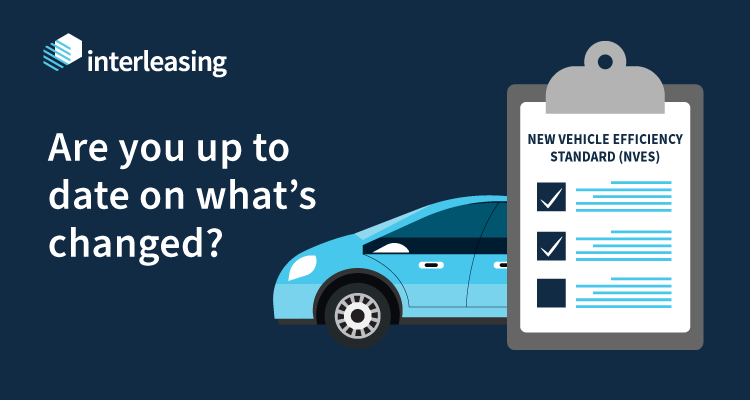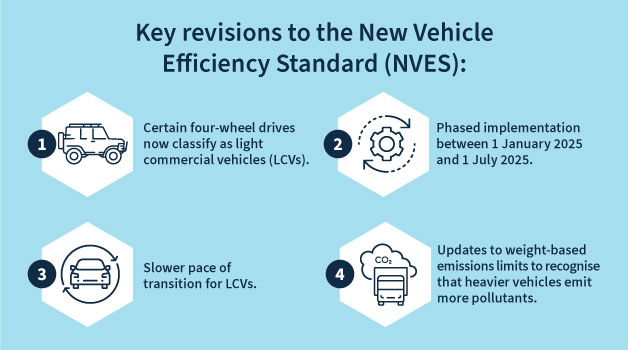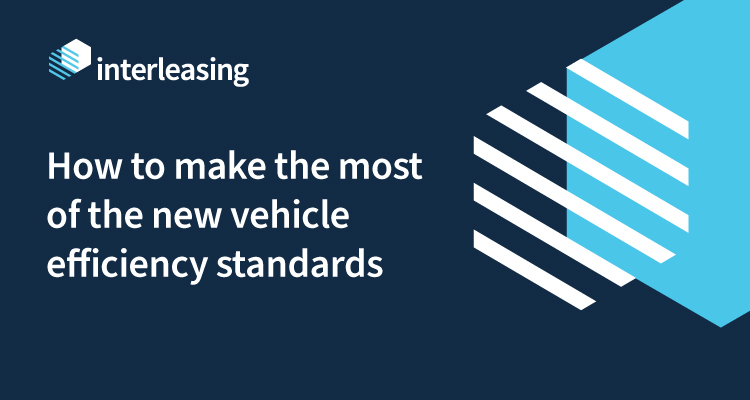
The Government has revised the new standards for vehicle fuel efficiency. Here’s what has changed since our last update.
In February 2024, the Federal Government introduced the New Vehicle Efficiency Standard (NVES) to increase the use of electric vehicles and reduce carbon emissions in Australia. Since our previous article on the NVES, the Government announced some revisions to the standard and passed it as law. Here’s a progress update to keep you up to speed on the changes.

What is the NVES?
As a quick recap, the NVES is a standard that regulates the carbon dioxide emissions of new passenger and light commercial vehicles. It aims to encourage manufacturers to supply more vehicles with lower carbon emissions.
Under the NVES, car suppliers must meet or exceed an average CO2 target for all their new cars. These targets will reduce over time to lower overall emissions. The scheme also enforces penalties on manufacturers for providing vehicles that don’t meet the emissions targets. More information about the NVES and how it works can be found here.
Why did the Government revise the NVES?
Overall, the community and industry support the NVES. After the initial release of the proposed standard, some industry groups shared feedback on key aspects including the pace of transition, vehicle types covered and penalties. Responding to the feedback, the Government has reviewed and adjusted the design parameters before finalising the standard.
What has changed since the NVES was introduced?
Here’s how the NVES has changed based on industry consultation:
- Reclassifying certain four-wheel drives (such as the Toyota Landcruiser and Nissan Patrol) from passenger car to light commercial vehicles. This recognises that some use a similar supporting frame to dual cab utes and need towing capacity above three tonnes.
- Slowing down the pace of transition for light commercial vehicles. The emissions path now aligns with the US Environmental Protection Agency’s vehicle standard to allow manufacturers more time to scale up the production of fuel-efficient vehicles.
- Modifying weight-based emissions limits (known as the break point) to recognise that heavier vehicles emit more pollutants.
- Phasing in the changes to allow time to prepare and test essential data reporting capabilities. The standard will still take effect from 1 January 2025, but the credit and penalty scheme will launch six months later on 1 July 2025.
To accelerate the transition, the Government will also provide $60 million to boost electric vehicle (EV) charging at Australian dealerships. The funding will come through its Driving the Nation Fund, set up in 2022 to invest in cheaper and cleaner transport.
How will these revisions impact my fleet?
Overall, the adjustments to the NVES should ease the compliance burden on manufacturers. Penalties will potentially be lower, with additional vehicles being categorised as light commercial and more realistic emissions targets for larger vehicles. So manufacturers may be less likely to pass on penalties for less fuel-efficient vehicles as costs through higher prices. This could lead to lower fleet costs for operations with a greater proportion of light commercial vehicles.
However, the slower transition will give manufacturers more time to move to supplying vehicles with higher fuel-efficiency. This could delay the increase in EV options available to Australian fleets.. A phased implementation will also give you more time to plan your fleet vehicle purchases or leases and consider the impact of the final standard.
Where to from here?
The NVES shouldn’t impact your existing fleets but may influence your purchases of new vehicles. Keep an eye out for any further updates from the Government over the implementation period. In the meantime, consider what your fleet composition could look like in the future using our 3-step framework for transitioning to EVs. You can download the roadmap here.


